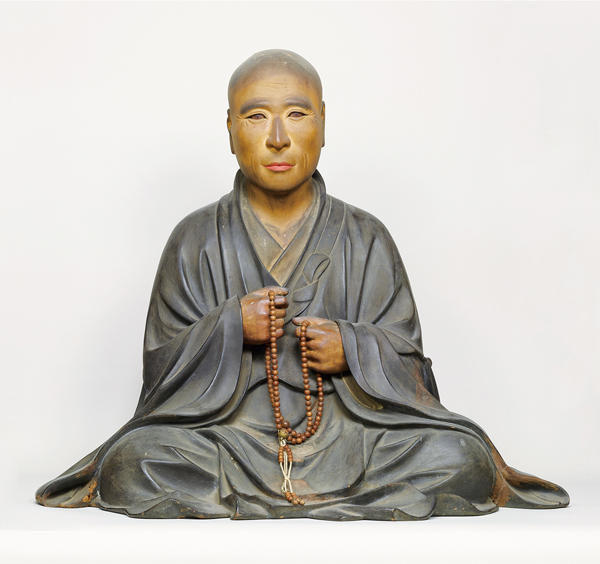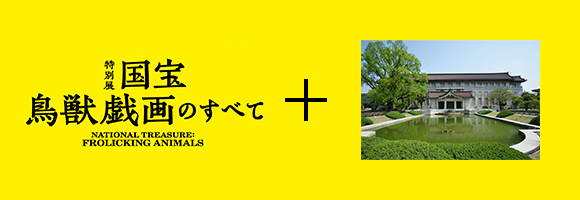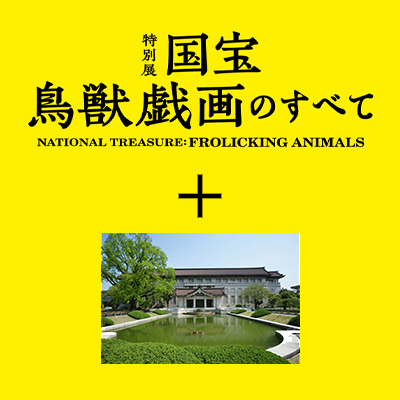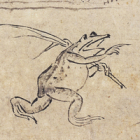Highlights of the Exhibition
Chapter 1: The National Treasure: Frolicking Animals in its entirety
Chapter 2: Recreating lost scenes through fragments and copies
Chapter 3: Priest Myoe and Kosan-ji Temple
Chapter 1: The National Treasure: Frolicking Animals in its entirety


Frolicking Animals, Volume 1 (detail)
Heian period, 12th century (Kosan-ji, Kyoto)
Volume One features vivid depictions of 11 species of animals, including rabbits, monkeys and frogs. Each animal is efficiently performing a distinctive role within the world of the handscroll. From the different drawing styles and animal expressions, it seems the former and the latter sections of the scroll were produced by different people.


Frolicking Animals, Volume 2 (detail)
Heian period, 12th century (Kosan-ji, Kyoto)
Volume Two is like an illustrated encyclopedia of animals. It features 16 different kinds of animals, though none of these are anthropomorphized like in Volume One. The first section features cows, hawks, chickens, dogs and other animals native to Japan, while the second section features animals not found in Japan, such as tigers and elephants, as well as imaginary beasts such as qilin, dragons and baku (mythological animals resembling tapirs).


Frolicking Animals, Volume 3 (detail)
Heian–Kamakura period, 12th–13th century (Kosan-ji, Kyoto)
The first half of Volume Three features frolicking humans and the second half frolicking animals. This album was retouched with thicker ink lines at a later date, but the original lines can still be seen within. They reveal extremely accurate portrayals rendered in precise, flowing brushstrokes. This volume features elements common to other illustrated scrolls from the Heian period, so its production could well date back to that time.


Frolicking Animals, Volume 4 (detail)
Kamakura period, 13th century (Kosan-ji, Kyoto)
Volume 4 mainly features human characters. Several depictions are based on motifs from Volumes One and Three, though the humans are bigger, the lines thicker and the ink lighter compared to the other three volumes. A high level of craftsmanship is apparent in the expansive feel of the speedily-drawn, precise brushwork.
Chapter 2: Recreating lost scenes through fragments and copies

Frolicking Animals, Fragment (Tokyo National Museum version)
Heian period, 12th century (Tokyo National Museum)
Chapter 3: Priest Myoe and Kosan-ji Temple
  |
Seated Sculpture of Priest Myoe
Kamakura period, 13th century
(Tokyo National Museum)
|
Page Top

 特別展「国宝 鳥獣戯画のすべて」
特別展「国宝 鳥獣戯画のすべて」






